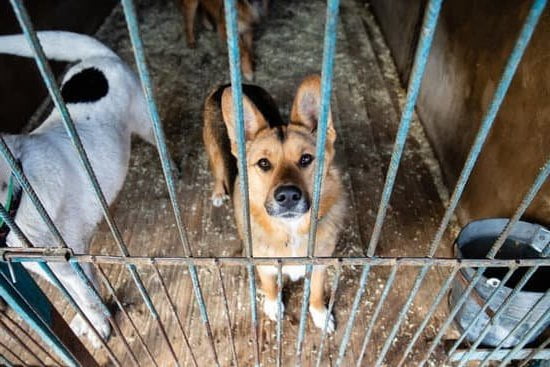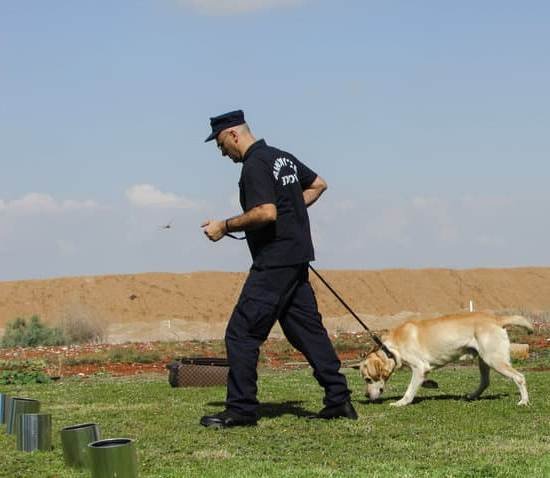A well-trained protection dog can provide an invaluable layer of security and peace of mind to both individuals and families. But just how much does it cost to train a protection dog? In this article, we will delve into the world of protection dogs, exploring their definition, benefits, and importance in today’s society.
We will also discuss the main factors that influence the cost of training these dogs, including breed selection, age, training level desired, trainer expertise, and ongoing maintenance. By understanding these factors, readers can make an informed decision on whether investing in a protection dog is financially feasible for their particular situation.
Protection dogs are highly trained canines that have been specifically bred and conditioned to protect their owners and property from potential threats or dangers. These dogs undergo rigorous training programs to develop their natural instincts further. The benefits of owning a well-trained protection dog are numerous. They provide a sense of security and act as effective deterrents against intruders or attackers. Additionally, these dogs can offer companionship and become integral parts of the family dynamic.
The cost of training a protection dog varies depending on several factors. Breed selection plays a crucial role in determining the overall price as certain breeds are more suitable for protection work than others due to their inherent characteristics. The age of the dog also influences the cost since older dogs may require additional time for training compared to younger ones.
The desired level of training – basic obedience versus specialized skills – also affects pricing. Moreover, the expertise and reputation of trainers can significantly impact costs. Lastly, ongoing maintenance in terms of continuous training sessions must be considered.
In the following sections, we will explore each factor in more detail while providing insights into different types of protection dogs available and their associated costs. Additionally, we will examine whether investing in a trained protection dog is worth it by evaluating potential benefits versus costs and discussing financing options, long-term considerations, finding reliable trainers, and ultimately helping readers make an informed decision.
Different Types of Protection Dogs
When it comes to protection dogs, there are various types available to suit different needs and requirements. Understanding the different levels of protection dogs and their unique skillsets is crucial when considering the cost of training. Here are the main categories of protection dogs:
- Personal Protection Dogs: These dogs are trained to protect individuals or families in their homes or while out in public. They can be an excellent deterrent against potential threats and provide a sense of security for their owners.
- Estate Protection Dogs: Designed for large properties or estates, these dogs are trained to patrol and protect expansive areas. Estate protection dogs have advanced obedience skills, as well as specialized training to detect intruders and respond accordingly.
- Executive Protection Dogs: Often used by public figures or high-profile individuals, executive protection dogs are extensively trained in personal protection techniques. They are taught to assess risks quickly and respond effectively in potentially dangerous situations.
The level of training required for each type of protection dog varies significantly, which directly influences the cost. Personal protection dogs typically require less extensive training compared to estate or executive protection dogs. As a result, the price will vary depending on the specific type of dog chosen and its intended use.
To ensure that you get a reliable and effective protection dog, it is essential to work with a reputable trainer who specializes in the type of dog you need. The expertise required for training executive protection dogs, for example, often demands higher fees due to the specific skills necessary for this level of training.
Ultimately, understanding the different types of protection dogs available and their unique skillsets will help you make an informed decision about what best suits your needs while also considering your budget.
Below is an unordered list summarizing the main points discussed in this section:
- Personal Protection Dogs: Offer security at home or in public.
- Estate Protection Dogs: Trained to patrol large properties effectively.
- Executive Protection Dogs: Ideal for high-profile individuals, requiring advanced training.
- The level of training directly factors into the cost.
- Reputable trainers who specialize in specific protection dog types may charge higher fees.
Factors That Influence the Cost of Training a Protection Dog
Training a protection dog can be a significant investment, and the cost varies depending on several factors. Understanding these factors will help prospective owners make an informed decision about training their protection dog. Below are the main factors that influence the cost of training a protection dog:
- Breed selection: The breed of the dog plays a crucial role in determining the cost of training. Certain breeds are more suitable for protection work due to their natural instincts and characteristics. Breeds like German Shepherds, Belgian Malinois, and Rottweilers are commonly chosen for this purpose. These breeds come with a higher price tag compared to others.
- Age of the dog: The age at which training begins also affects the overall cost. Ideally, protection dog training should start when the dog is still young to ensure proper socialization and imprinting. Training older dogs requires more time and effort from trainers, thus increasing the cost.
- Training level desired: The level of training desired for a protection dog also influences the cost. Basic obedience commands may be less expensive than advanced or specialized training, such as bite work or off-leash control. The complexity and duration of each training program contribute to its overall cost.
- Trainer expertise: The credentials and reputation of the trainer or training facility impact pricing as well. Highly experienced trainers who have proven success records often charge higher fees for their expertise. It is essential to choose a trainer with extensive experience in protection dog training to ensure quality results.
- Ongoing maintenance: Continuous training and maintenance are crucial for keeping a protection dog’s skills sharp and reliable over time. This includes regular follow-up sessions, refreshers, and additional specialized training if needed. Ongoing maintenance contributes to the long-term costs of owning a well-trained protection dog.
| Factors | Influence on Cost |
|---|---|
| Breed selection | Higher cost for breeds suitable for protection work |
| Age of the dog | Higher cost for training older dogs |
| Training level desired | Higher cost for advanced or specialized training |
Cost Breakdown of Training a Protection Dog
When considering the cost of training a protection dog, it is important to understand the various financial components involved. By breaking down these costs, potential owners can make an informed decision and evaluate whether investing in a protection dog is financially feasible for their specific situation.
The first financial component to consider is the cost of the dog itself. The price range for different breeds suitable for protection work varies greatly. Breeds like German Shepherds and Belgian Malinois, which are commonly used as protection dogs, tend to be more expensive due to their natural protective instincts and trainability. Prices can range anywhere from $1,000 to $50,000 depending on factors such as pedigree and bloodline.
Another significant expense is the training program. The average price range for various levels of training varies depending on the duration and intensity of the program. Basic obedience training typically costs around $1,500 to $2,500, while advanced training can range from $5,000 to $10,000 or more. Specialized training programs that focus on specific skills required for personal or executive protection can be even pricier.
In addition to the initial purchase price and training fees, there are other expenses to consider as well. Necessary equipment such as bite suits, training aids, and maintenance items can add up quickly and may cost several thousand dollars. Regular veterinary care is crucial for keeping your protection dog healthy and should not be overlooked.
This includes routine check-ups, vaccinations, flea and tick prevention medication, as well as potential medical expenses in case of illness or injury. Miscellaneous expenses like travel costs if using an out-of-state trainer, certification fees if seeking official recognition for your dog’s abilities or competitions may also contribute to overall costs.
By understanding the breakdown of these financial components involved in training a protection dog upfront before embarking on this journey will help potential owners plan accordingly and make an informed decision regarding their budget. It is worth noting that while the upfront costs of training a protection dog may seem significant, the potential benefits and savings associated with owning a well-trained protection dog can outweigh the initial investment.
Examining Potential Cost vs. Benefit
When considering the cost of training a protection dog, it’s important to evaluate whether the investment is financially feasible for your specific situation. While the upfront cost may seem substantial, it is essential to assess the long-term benefits and potential savings that come with owning a well-trained protection dog.
Advantages and Potential Savings:
Owning a trained protection dog can provide numerous advantages that make the cost worthwhile. First and foremost, these dogs offer a high level of security and can protect you, your family, or your property from potential threats. The mere presence of a protection dog acts as a deterrent to criminals or intruders. Their advanced training allows them to identify threatening situations and respond accordingly, providing peace of mind for their owners.
Additionally, a well-trained protection dog can save you money in various ways. For instance, they can potentially reduce the need for expensive home security systems or surveillance services. Moreover, their advanced training minimizes the likelihood of damage to property during potentially dangerous situations. With their ability to act quickly and effectively in emergencies, they can prevent incidents from escalating and causing further financial loss.
Justified Scenarios:
There are certain scenarios where the cost of training a protection dog is easily justified. For individuals who live in high-crime areas or face specific security risks due to their profession or public status (e.g., celebrities or executives), investing in a trained protection dog becomes crucial for personal safety. Moreover, families with young children or vulnerable individuals benefit greatly from having an extra layer of security that a well-trained dog can provide.
Ultimately, determining whether the cost is worth it depends on individual circumstances and priorities. It’s essential to weigh potential benefits against expenses before making this significant investment.
However, it is important to note that while owning a protection dog comes with many advantages, it requires responsible ownership and ongoing maintenance to ensure its effectiveness over time. This includes proper socialization, continued training, routine veterinary care, and other related expenses. Taking these factors into account will help provide a more comprehensive understanding of the financial commitment involved in owning a trained protection dog.
When considering the potential costs versus benefits, it may be helpful to consult with professionals who specialize in protection dog training or seek advice from others who have experience owning these dogs. By thoroughly researching and evaluating your specific needs, you can make an informed decision about whether investing in a protection dog is right for you.
Financial Options and Considerations
When considering the cost of training a protection dog, it is important to explore the financial options and considerations available to potential owners. The upfront cost of purchasing and training a protection dog can be significant, but there are ways to make it more manageable.
Explore Financing Options
Purchasing and training a protection dog can be a significant investment, but for those who may not have the full amount upfront, there are financing options available. Some reputable protection dog trainers offer financing plans that allow owners to pay for their dog and training over time. This can be a great option for individuals who want to spread out the cost into manageable monthly payments.
Additionally, pet loans or personal loans from financial institutions could provide an alternative source of funding. These loans can often come with favorable interest rates and repayment terms, making them an attractive option for prospective protection dog owners.
Alternative Ways to Acquire a Protection Dog at Lower Cost
The cost of purchasing and training a protection dog can vary based on factors such as breed selection and level of training desired. For those looking to acquire a protection dog at a lower cost without compromising quality or safety, there are some alternatives to consider.
- Rescue Organizations: Look into rescue organizations that specialize in rehoming trained dogs or dogs with potential for protection work. These organizations often have lower adoption fees compared to buying a puppy from a breeder.
- Dog Training Schools: Consider enrolling in a reputable dog training school where you can learn how to train your own protection dog under the guidance of experienced trainers. This option may require more time and effort on your part but can significantly reduce costs.
- Breeders: Research breeders who have a reputation for producing high-quality protection dogs at a more affordable price. Keep in mind that the cost may still be significant, as breeding and training top-notch dogs requires expertise and investment.
Long-Term Financial Considerations
When considering the cost of training a protection dog, it is crucial to remember that the financial commitment extends beyond the initial purchase and training. Ongoing maintenance costs need to be factored in to ensure proper care and continued training for the dog.
This includes regular veterinary care, vaccinations, food, grooming supplies, and professional training sessions to maintain skills. Additionally, owners should consider obtaining specialized pet insurance policies that cover any potential medical or liability expenses related to owning a protection dog.
Resources for Finding Reliable Protection Dog Trainers
Finding a reliable protection dog trainer is crucial when considering training a protection dog. This section will provide readers with valuable resources to help them find reputable trainers who can effectively train their dogs in protection work. By following these tips and utilizing the recommended organizations and associations, readers can ensure they are entrusting their dogs to knowledgeable and experienced professionals.
Tips for Finding Reputable Protection Dog Trainers
When searching for a protection dog trainer, it is essential to conduct thorough research and due diligence. Here are some tips to help you find a reliable trainer:
- Ask for recommendations: Seek recommendations from trusted sources such as veterinarians, friends or family members who have already trained their dogs, or professional dog trainers.
- Check credentials and experience: Look for trainers who have certifications or memberships with renowned organizations like the National Tactical Police Dog Association (NTPDA) or the International Association of Canine Professionals (IACP). Additionally, consider trainers with extensive hands-on experience in training protection dogs.
- Read reviews and testimonials: Search for online reviews or testimonials from previous clients to get an idea of the quality of the trainer’s work and their ability to meet specific goals.
- Visit training facilities: If possible, visit potential trainers’ facilities to observe their training methods, assess the condition of the facility, and interact with staff members.
- Request references: Ask potential trainers for references from previous clients to gain insights into their success rate and overall satisfaction.
Recommended Organizations and Associations
These organizations and associations can be valuable resources when searching for reliable protection dog trainers:
- International Association of Canine Professionals (IACP): The IACP is an international organization that provides professional education, support, certification programs, and networking opportunities for canine professionals, including protection dog trainers.
- National Tactical Police Dog Association (NTPDA): The NTPDA focuses on providing high-quality education and training standards to law enforcement agencies, military personnel, and civilian trainers involved in the development and deployment of police service dogs and protection dogs.
- United States Police Canine Association (USPCA): Although primarily dedicated to training police dogs, the USPCA can be a valuable resource for finding experienced trainers who specialize in protection dog training.
- American Society of Canine Trainers (ASCT): The ASCT is an organization that promotes ethical dog training practices through positive reinforcement methods. Their directory can provide contacts for reputable protection dog trainers.
By utilizing these resources and following the provided tips, readers can increase their chances of finding a reliable protection dog trainer who can meet their specific needs and goals. It is important to note that selecting a trainer requires careful consideration and research to ensure that both the well-being of the dog and the desired training outcomes are met.
Conclusion
In conclusion, the decision to invest in training a protection dog requires careful consideration of various factors, including the type of protection dog desired, the associated costs, and the potential benefits. While it is true that training a protection dog can be a significant financial investment, the value and peace of mind that a well-trained protection dog can bring cannot be understated.
By thoroughly evaluating your specific needs and circumstances, you can determine whether the cost of training a protection dog is worth it for you. Take into account the potential savings associated with having a trained protection dog, such as reduced home security costs or decreased insurance premiums. Additionally, consider scenarios where having a protection dog may be justified, such as living in a high-risk area or working in an occupation that requires personal safety.
Furthermore, it is essential to explore financial options and alternative ways to acquire a trained protection dog at a lower cost without compromising quality or safety. Many reputable trainers offer financing options that can make training more accessible. Additionally, organizations or associations specializing in service dogs may provide resources or programs that assist individuals in acquiring trained dogs at reduced prices.
Ultimately, when considering training a protection dog, it is crucial to conduct extensive research and seek professional advice. This includes finding reputable trainers through due diligence and thorough investigation. Use trusted resources such as respected organizations or certification programs to help guide your search.
Frequently Asked Questions
How much does it cost to train a dog to protect me?
The cost to train a dog to protect you can vary depending on several factors. A typical price range for professional protection dog training can be anywhere from $5,000 to $25,000 or even more.
The cost is determined by various factors such as the age and breed of the dog, the level of training required, the reputation and experience of the trainer, and any additional services provided. It’s important to remember that this is an investment in your safety, so it’s crucial to find a reputable trainer who specializes in protection dog training and has a track record of success.
How long does it take to train a protection dog?
The time it takes to train a protection dog depends on several factors such as the individual dog’s temperament, genetics, prior training experience, and the depth of training required. On average, it may take anywhere from six months to two years for a dog to become fully trained as a protection dog.
However, it’s important to note that this timeline can vary significantly based on the specific needs and requirements of each individual case. Consistency in training, regular practice sessions, and a structured approach are key elements in achieving successful results within a reasonable timeframe.
Can I train my dog to be a protection dog?
It is possible to train your own dog to be a protection dog; however, it requires dedication, knowledge, and expertise in both canine behavior and advanced obedience training techniques. Keep in mind that proper protection dog training involves much more than basic obedience commands like “sit” or “stay.” It includes specialized skills like bite work or defense training that should only be done under expert guidance.
If you decide to undertake this responsibility yourself, it’s highly recommended to seek professional assistance or enroll in specialized protection dog training programs where trainers can guide you through the process safely and effectively. Consulting with experienced professionals ensures that your dog receives appropriate socialization and is trained using positive reinforcement techniques while maintaining their overall welfare.

Welcome to the blog! I am a professional dog trainer and have been working with dogs for many years. In this blog, I will be discussing various topics related to dog training, including tips, tricks, and advice. I hope you find this information helpful and informative. Thanks for reading!





